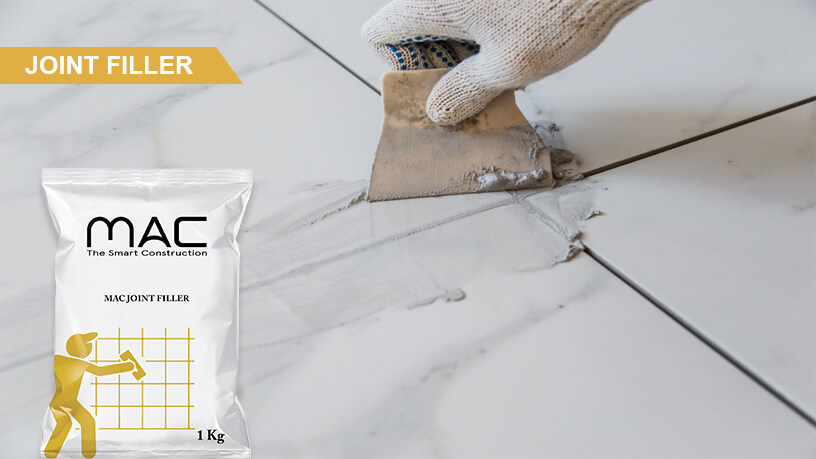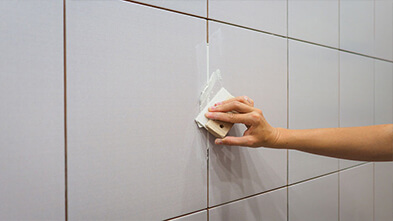
MAC Joint Filler
Polymer modified grout, Suitable for filling joint grout of Ceramic, Glaze, Mosaic, Marble etc. Easy to mix & apply. Good Bonding Strength.
- With Good Compressive Strength
- Polymer modified grout filler powder
- High Strength & Durable Joints
- Easy mixing, application & Maintenance
- Non shrink, Durable & Abrasion Resistance
About MAC Joint Filler
- As Joint Filler on Wall Tiles and Floor Tiles
- Interiors and Exteriors
- Work Best at Dry & Wet Areas
- High Strength & Durable Joints
- Non Shrink & Abrasion Resistance
- Available in range of color shades
- Available in 1,5,25 Kg. Smart bag/box
- With weather proof packing
- Surface Preparation
The Application surface should be rigid, and free from oil, grease, paint, loose plaster or any other dirt particles, Dampen the wall before Application of rapid repair.
- Mixing
Pour 6-7 liters of potable water in a clean container and then add 1 bag (30 kg) of MAC Rapid Repair. Pour 4-6 liters of potable water in a clean container and then add 1 bag (30 kg) of MAC Rapid Repair.
It can be mixed by hand. Use of Mechanical mixer or Electrical stirrer is recommended for better results. Mixing should be done for 5- 10 minutes depending upon the speed of the mixing equipment. Leave the mix to slake for 5- 10 min and remix before use.
- Application
The mixture should be applied within one hour of preparation. If the concrete surface is smooth and dense, it's recommended that the surface is made rough for better sticking of the plaster layer.
In normal weather, MAC Rapid Repair doesn't need watering for the first 24 hours. After the plaster is completely dry, curing should be done 1 times for 1 day. In abnormal weather conditions.
- Always add Powder to liquid and not liquid to powder.
- Do not apply to wet or uncured concrete surfaces.
- Do not apply at Temperatures of 3°C or less.
Concerned with the development, improvement, and implementation of integrated system of people, money, knowledge, information, equipment, energy, materials, analysis and syn thesis, as well as the mathematical, physical and social sciences together with the principle and methods of engineering design to specify, predict, and evaluate the results to be obtained from such systems or processes.


